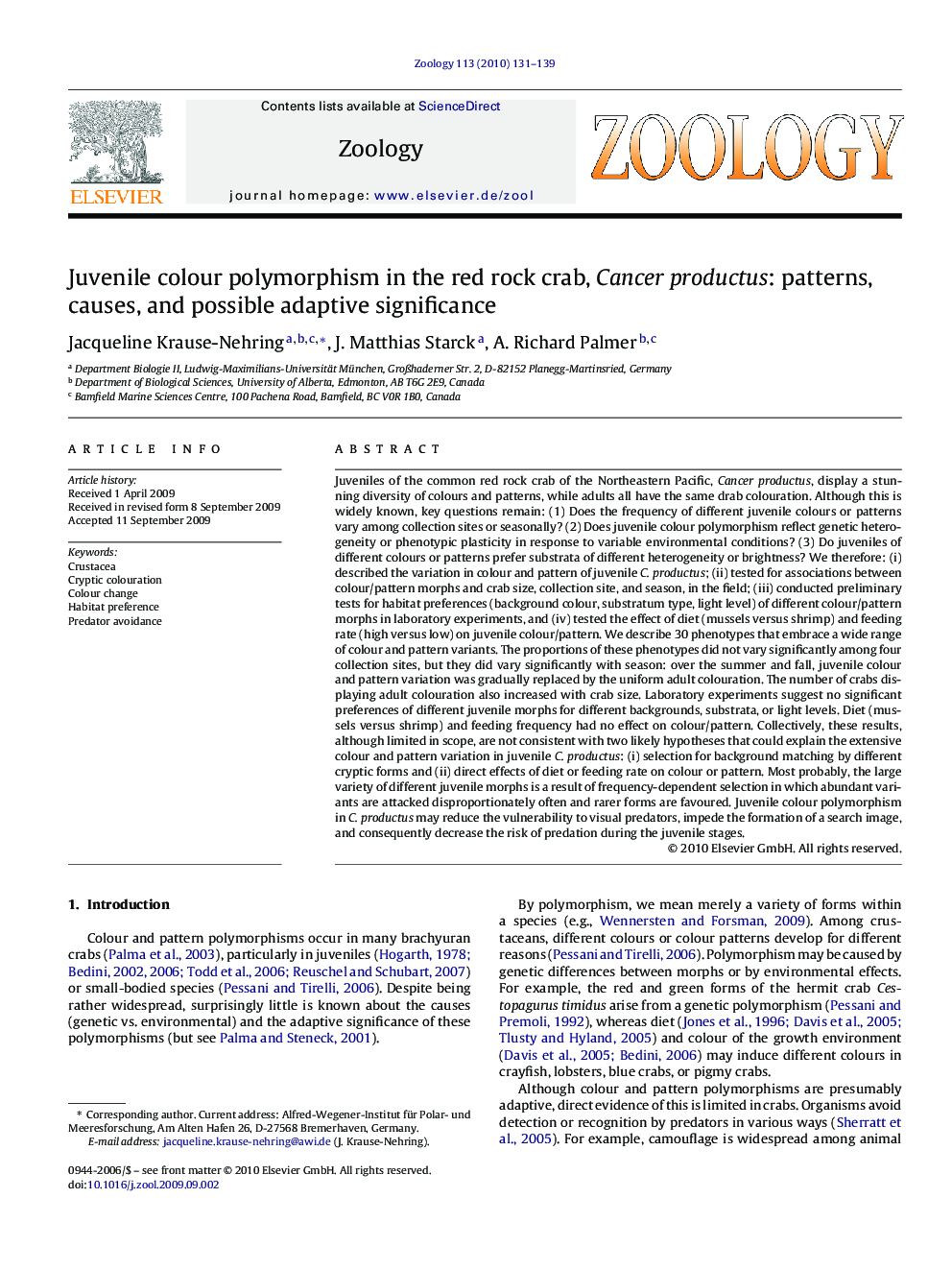| کد مقاله | کد نشریه | سال انتشار | مقاله انگلیسی | نسخه تمام متن |
|---|---|---|---|---|
| 2791275 | 1154863 | 2010 | 9 صفحه PDF | دانلود رایگان |

Juveniles of the common red rock crab of the Northeastern Pacific, Cancer productus, display a stunning diversity of colours and patterns, while adults all have the same drab colouration. Although this is widely known, key questions remain: (1) Does the frequency of different juvenile colours or patterns vary among collection sites or seasonally? (2) Does juvenile colour polymorphism reflect genetic heterogeneity or phenotypic plasticity in response to variable environmental conditions? (3) Do juveniles of different colours or patterns prefer substrata of different heterogeneity or brightness? We therefore: (i) described the variation in colour and pattern of juvenile C. productus; (ii) tested for associations between colour/pattern morphs and crab size, collection site, and season, in the field; (iii) conducted preliminary tests for habitat preferences (background colour, substratum type, light level) of different colour/pattern morphs in laboratory experiments, and (iv) tested the effect of diet (mussels versus shrimp) and feeding rate (high versus low) on juvenile colour/pattern. We describe 30 phenotypes that embrace a wide range of colour and pattern variants. The proportions of these phenotypes did not vary significantly among four collection sites, but they did vary significantly with season: over the summer and fall, juvenile colour and pattern variation was gradually replaced by the uniform adult colouration. The number of crabs displaying adult colouration also increased with crab size. Laboratory experiments suggest no significant preferences of different juvenile morphs for different backgrounds, substrata, or light levels. Diet (mussels versus shrimp) and feeding frequency had no effect on colour/pattern. Collectively, these results, although limited in scope, are not consistent with two likely hypotheses that could explain the extensive colour and pattern variation in juvenile C. productus: (i) selection for background matching by different cryptic forms and (ii) direct effects of diet or feeding rate on colour or pattern. Most probably, the large variety of different juvenile morphs is a result of frequency-dependent selection in which abundant variants are attacked disproportionately often and rarer forms are favoured. Juvenile colour polymorphism in C. productus may reduce the vulnerability to visual predators, impede the formation of a search image, and consequently decrease the risk of predation during the juvenile stages.
Journal: Zoology - Volume 113, Issue 3, May 2010, Pages 131–139